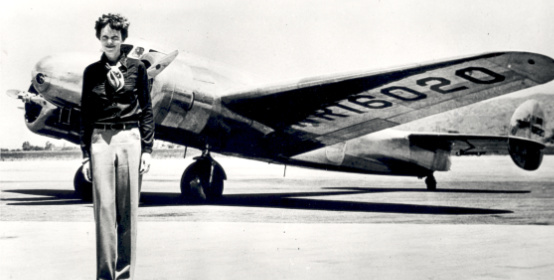
The story of Amelia Earhart—from her pioneering aviation career to her mysterious disappearance—has captured people's hearts and minds for almost 90 years. Recently, a South Carolina robotics company announced that they may have found the missing remains of her plane. What did they find, and why do they think it was hers?
First, the basics. In 1937, Earhart and her navigator, Fred Noonan, attempted the first circumnavigational flight of the Earth. Earhart's plane was a Lockheed Model 10 Electra, a competitor to the Douglas DC-2 and Boeing 247.
The Lockheed Electra is an all-metal twin-engine monoplane that comes in several variants. The specific type that Earhart flew was an Electra 10-E, powered by two air-cooled, 600-horsepower Pratt & Whitney R-1340 Wasp S3H1 reciprocating engines. Only 15 of these variants were produced, two of which remain on static display in aviation museums.
Nobody knows what exactly happened to Earhart's plane. She and Noonan were last seen in New Guinea in early July 1937, right before a stop in Howland Island in the Pacific. Earhart and Noonan planned to stop on Howland Island to refuel before the last leg of their trip. On the evening of July 2nd, they radioed their position near Howland Island and mentioned being low on fuel. Neither they nor the plane were ever seen or heard from again—until, perhaps, now.
Over the years, there have been countless attempts to search for Earhart, Noonan, and the lost Lockheed 10-E Electra. First, the US Navy attempted to locate them during a 16-day search that covered an area as large as the state of Texas. Nothing was found and, in January of 1939, Earhart and Noonan were declared dead.
Most recently, Ted Waitt, (co-founder of Gateway Inc.) financed an attempt in 2009. A year later, The International Group for Historic Aircraft Recovery (TIGHAR) attempted a search off of the island of Nikumaroro, where Earhart's bones were once thought to have been found. TIGHAR attempted again in 2015. Then, in 2019, Professor Robert Ballard, discoverer of the Titanic's wreckage, attempted another search around Nikumaroro. None of these searches were successful.
Then came Deep Sea Vision, a marine robotics and ocean exploration business based in South Carolina. Tony Romeo, who started the company in 2022, is a pilot and former USAF intelligence officer. He sold off his real estate company's assets and started the ocean exploration business largely to attempt to find Earhart's plane and, at long last, answer the question of exactly what happened.
Last year, Deep Sea Vision sent a 16-person crew on a three-month expedition to capture sonar images of the area where Earhart is believed to have disappeared. Early in the trip, the team captured an image that may be the wreckage of Earhart's plane.
They used a device HUGIN 6000—an autonomous underwater vehicle capable of reaching depths of 20,000 feet. These vehicles, produced by Kongsberg Discovery, are completely free-swimming, don't require tethers or cables, have a long battery life, and can be equipped with a variety of high-tech sensors and imaging payloads.
Operating for two days at a time, Deep Sea Vision's HUGIN 6000 captured images of the sea floor that were thought to be untouched by previous wreckage. Later, while analyzing the images, the team spotted something very interesting: A blurry mass that appeared to be unmistakably plane-shaped.
The Lockheed Model 10-E Electra has some distinguishing characteristics. The sonar image does not provide enough detail to pick all of these out, but even the outline of the object corresponds to Earhart's plane. The outline looks the way you'd expect 90-year-old plane wreckage to look, down to the angle of the broken wings. It's also about the same size as the 10-E Electra. Upon closer inspection, it's also possible to make out shapes that resemble the plane's dual tails. This information, coupled with the object's location, means that there's a good possibility that this could be Amelia Earhart's plane.
While the object captured by the HUGIN 6000 certainly could be the vanished Lockheed 10-E Electra, it's going to be a while before there's any confirmation. At the moment, experts are divided on the subject.
The plane-shaped mass is located at a depth of about 16,400 feet, or nearly 4,000 feet deeper than the wreckage of the Titanic. This makes exploration and potential retrieval of the wreckage difficult, at best. For now, Romeo is keeping the location of the wreckage a secret and there are plans in the works to take another, closer look.
Deep Sea Vision was founded, in part, to continue the search for Amelia Earhart's missing plane, solve the mystery of its disappearance, and bring closure to her family and the many aviation enthusiasts whom she inspired. With the discovery of what appears to be the wreckage of a plane much like hers, they may have done exactly that.